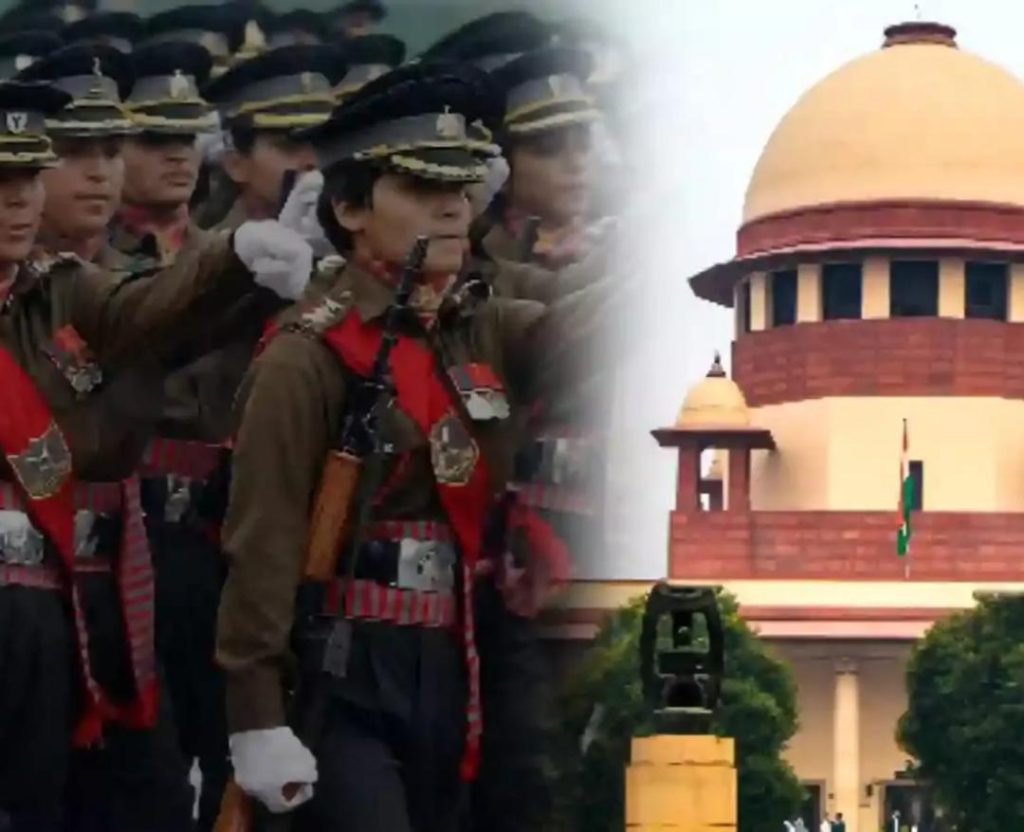
Why Women Officers Can’t be Deployed for Counter-Insurgency?: SC
In a recent landmark judgment, the Supreme Court of India has raised questions about the deployment of women officers in counter-insurgency and counter-terror forces. The court questioned the government’s stance on not deploying women officers in these roles, citing merit and equality. This judgment has sparked a debate about the role of women in the armed forces and the limitations imposed on them.
The case, Arshnoor Kaur v. The Union of India, 2025, deals with the deployment of women officers in the Indian Army. The petition was filed by Arshnoor Kaur, a meritorious candidate who cleared the Judge Advocate General (JAG) entrance exam but was not selected for the Indian Army’s Judge Advocate General (JAG) Branch. Kaur’s petition challenged the Army’s decision to restrict the number of women officers in the JAG branch.
The Supreme Court, while hearing the petition, observed that if women candidates are more meritorious than men in the JAG entrance exam, then merit must be given a chance. The court also questioned the executive’s authority to restrict the number of women officers or make reservations for male officers. The court said that the executive cannot impose such restrictions, as it would be violative of the principles of equality and merit.
The court’s intervention has brought to the fore the long-standing issue of gender equality in the armed forces. The Indian Army has traditionally been a male-dominated institution, and women have faced limited opportunities for deployment in combat roles. While women have been allowed to join the Army in various branches, their deployment in combat roles has been restricted.
The Supreme Court’s judgment has sparked a debate about the role of women in the armed forces and the need to re-evaluate the deployment policies. The court’s observation that merit must be given a chance has raised questions about the Army’s decision-making process. If women candidates are more meritorious than men, why should their selection be restricted?
The Army’s decision to restrict the number of women officers is based on the assumption that women are not suited for combat roles. However, this assumption is not supported by empirical evidence. Women have proven themselves to be capable and effective in combat roles, and their deployment in these roles has been successful in many countries.
The Supreme Court’s judgment has also highlighted the need to re-evaluate the Army’s deployment policies. The Army’s policy of restricting the number of women officers is based on the assumption that women are not suitable for combat roles. However, this assumption is not supported by empirical evidence. The Army’s policy is based on outdated stereotypes and does not take into account the changing nature of warfare.
The Supreme Court’s judgment has also raised questions about the role of the executive in imposing restrictions on the deployment of women officers. The court’s observation that the executive cannot impose such restrictions has implications for the deployment of women officers in other branches of the armed forces.
In conclusion, the Supreme Court’s judgment has brought to the fore the long-standing issue of gender equality in the armed forces. The court’s observation that merit must be given a chance has raised questions about the Army’s decision-making process. The judgment has also highlighted the need to re-evaluate the Army’s deployment policies and the role of the executive in imposing restrictions on the deployment of women officers.






